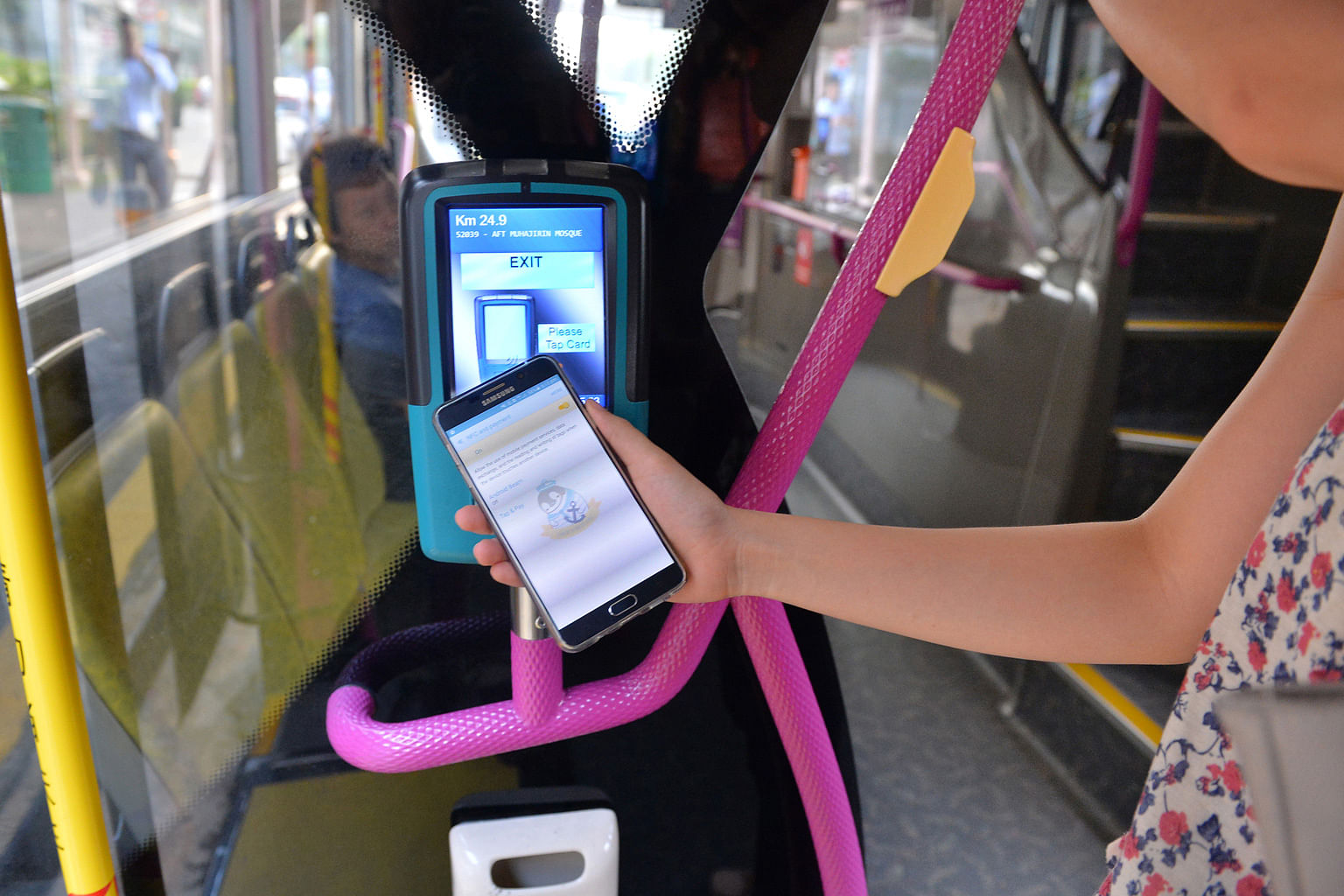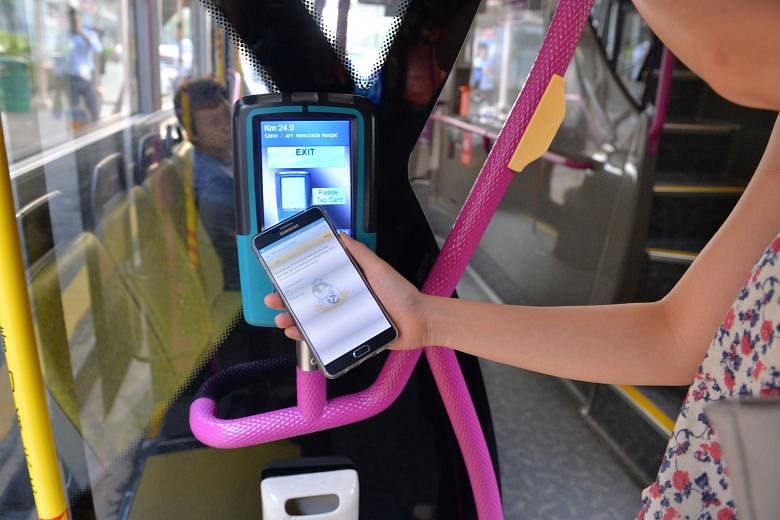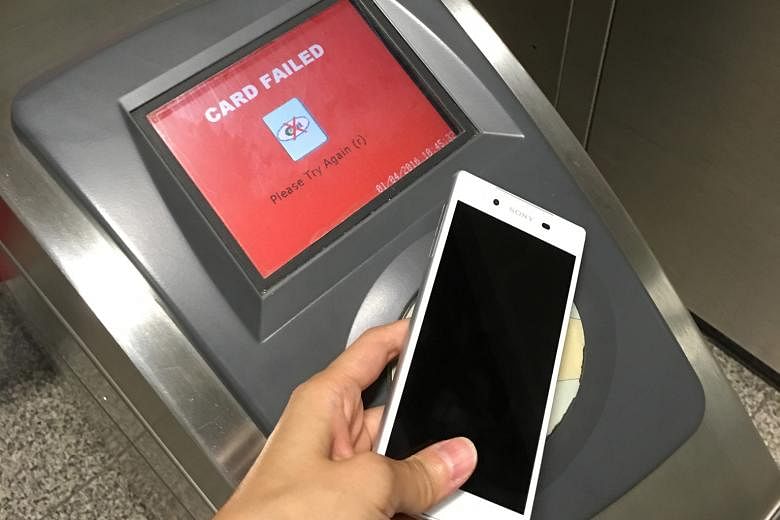Last week's news that commuters can tap their phones to pay for bus and train rides has long been awaited, but it did not register highly on my excitement meter.
The biggest snag? The limited handsets certified to work with the public transit payment system here. The same problem that surfaced in August 2012 when Near Field Communication (NFC) payment, as the technology is called, was first launched here is still a problem today.
NFC is a short-range wireless communication technology that allows for data transmission between a mobile device and a contactless card reader.
Specifically, NFC handsets must follow the Contactless e-Purse Application Standard, found in every ez-link plastic card and only in Singapore.
As announced last week, only 19 Android handsets from three manufacturers have been approved for transit use here, and many are old models from two to three years back. They include the Sony Xperia Z, LG Optimus G and Samsung Galaxy S III. Prominent Android handset brands like Xiaomi, Asus, HTC, Huawei and Oppo are absent.

Another bummer is that Apple iPhone users like me can't benefit from this convenience.
The Straits Times understands that Apple did not submit its phones for certification, done by a local consortium that includes Singtel, StarHub, M1, Citibank Singapore, DBS Bank and smart card chip maker Gemalto.
Apple has also reportedly locked down the NFC chip in its phones for its Apple Pay mobile payment platform, expected to roll out in Singapore later this year. Other payment systems cannot be used by its phones.
So, what was believed to be the "killer" application for mobile payment has now lost its appeal.
One would expect the handset issue to be resolved after some two years of trial at the transit gates. Plus, the earlier NFC payment has already seen four years of use at some 30,000 retail points, including ComfortDelgro taxis and Watsons stores.

Even among Android phone users here, reaction to the news has been mixed. Many were baulking at the upgrade cost of $37.45 for a new NFC SIM card.
Even existing NFC SIM cards must be swopped out for a new NFC SIM card for transit purposes. The old NFC SIM card does not have special computer codes that work with the train fare gates and card readers on buses.
As at end-2013, there were 15,000 early adopters with these older NFC SIM cards. One such early adopter Jens Henoch, 43, told The Straits Times: "Early adopters pay a second time for changing their SIM card, and have to partially forfeit the stored value in their previous SIM card."
Over the weekend, I tested the service on a Sony Xperia Z5, one of the approved handsets, and found that many conditions must also be met before fare deduction.
First, the phone battery must not run out of juice. Second, the phone cannot be tapped face down.
I also encountered several error messages while tapping to pay on buses and trains. The phone must be put very close to, or almost touching the reader, for the sensor to detect it. However, using a phone cover does not interfere with payment.
Topping up the value of the ez-link e-purse stored in the NFC SIM card was a breeze at train stations as the top-up machines have a flat and wide card reader. I just put the phone on the reader like I would the plastic ez-link card.
But I could not top up at DBS ATMs as the phone is blocked from the ATM card reader by a plastic sleeve designed for the plastic ez-link card.
Top-up woes at ATMs aside, the ez-link e-purse stored in the NFC SIM card is on a par with the plastic ez-link card when it comes to ease of use. For instance, the value in both can be automatically reloaded with deductions tied to credit cards or banking accounts.
The Land Transport Authority has to do better to convince people to buy an NFC SIM card just so they can tap their phones instead of a plastic card at fare gates and card readers on buses.
Moreover, users who want to tap their phones can already do so using a phone cover with a slot for the ez-link card.



